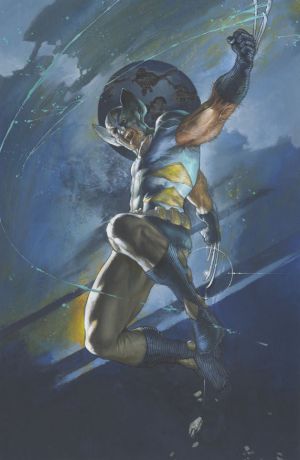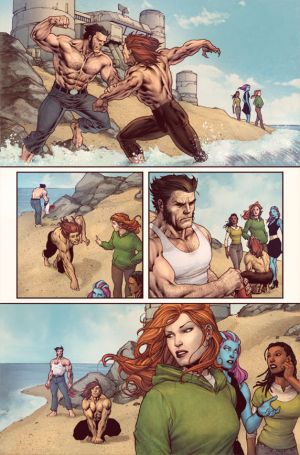- Comics
- Comics Reviews
- Manga
- Comics Reviews
- European Comics
- News
- Comics News
- Press Releases
- Columns
- Spotlight
- Digital Comics
- Webcomics
- Cult Favorite
- Back Issues
- Webcomics
- Movies
- Toys
- Store
- More
- About
By Andy Frisk
July 1, 2011 - 22:00
Hope Summers, “dubbed the Mutant Messiah,” is too often “all work and no play.” Being the purported savior of a race and being raised by Cable, her teammates shouldn’t be surprised or concerned that she spends most of her free time disassembling and reassembling her guns. When Hope is convinced by teammates Laurie and Idie that some time out doing girl-stuff, i.e. shopping for clothes, will help her relax some, the fun is short lived. When Frank Bohannan aka the Crimson Commando kidnaps Hope with the hopes of her reviving his now deactivated mutant powers, only one X-Man is truly best suited to rescue her. The only problem is that this X-Man doesn’t exactly have a soft spot in his heart for her…
 |
“Losing Hope” can be chocked up as yet another Wolverine lone wolf-type story where everyone’s favorite adamantium laced hero saves the kid singlehandedly, but only at first glance. We’ve seen this type of story over and over again, yet Gillen and Roberson manage to get plenty of mileage out of this often overused plot, They do so by staying true to the X-Men story telling tradition of using these rehashed plotlines to develop and deepen their protagonists’ characters. It is stories like these that have endured the X-Men to millions of fans. There’s an old saying in the comic book reading world that while DC Comics might have more iconic characters, Marvel Comics has better stories. Uncanny X-Men #539 is a fine example of just that. Wolverine has a long history of being the character that has to make the tough decisions, of the life and death kind, and has in the past. Hope Summers might be the “mutant messiah,” (interestingly enough another version of the “Warrior Christ” figure that so permeates our stories these days—albeit keeping with the progressive nature of the X-Men’s stories, she's a female messiah), but she’s manifested the Phoenix Effect before on occasion and any readers of X-Men comics or watchers of the X-Men films knows that the word Phoenix equals bad news in the long run. Logan is afraid to get close to Hope in the case that she becomes a Dark Phoenix in the future and he is tasked with putting her down. Logan verbalizes this to an extent for the first time here, and Hope finally gets some understanding of why he’s been acting as he has towards her. So with this simple little Lone Wolf Logan saves the day story, Gillen manages to pack in a wealth of emotional weight and clearly references the effect the mountain of Phoenix story continuity and anxiety has on these characters. Honestly, as far as the X-Men universe of stories goes though, it’s not a stretch to imagine that eventually the X-scribes will turn her into The Phoenix. After all, Hope is a messiah, and most messiahs are supposed to die and be reborn.
 |
Ibraim Roberson’s artwork is spectacular. It really is almost flawless in its layout, anatomy, realism, and detail. It’s pretty amazing how he puts so much detail into making every tree shown in the background, during the story’s final showdown scenes, look different and unique. His images of the fire scarred Wolverine are pretty striking as well. When I think of the best in contemporary mainstream art comic books, it’s this type of artwork that is the most appealing and fresh, not the 1990s rehash of images that we’re going to be deluged with from DC Comics shortly.
Uncanny X-Men #539 is another welcome example of how now just might be one of the best times to be an X-Fan. With the best X-Men movie ever made in theatres and with what looks to be a great jumping on point, rearrangement of the status quo, and all around good story coming up in a few weeks with X-Men SCHISM, wayward X-Fans like me are joyfully rediscovering the roots of what made us X-Fans in the first place.
Rating: 8 /10